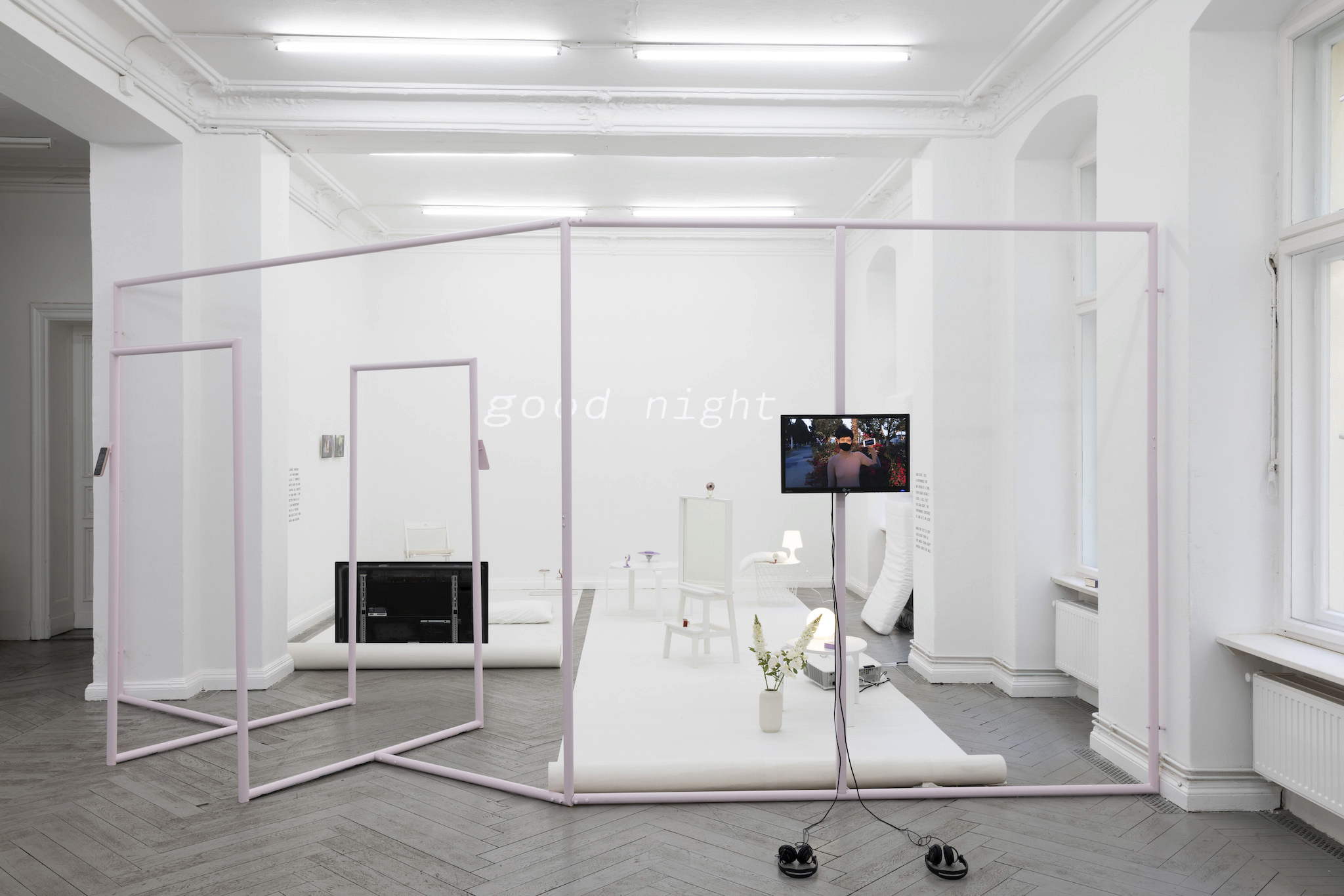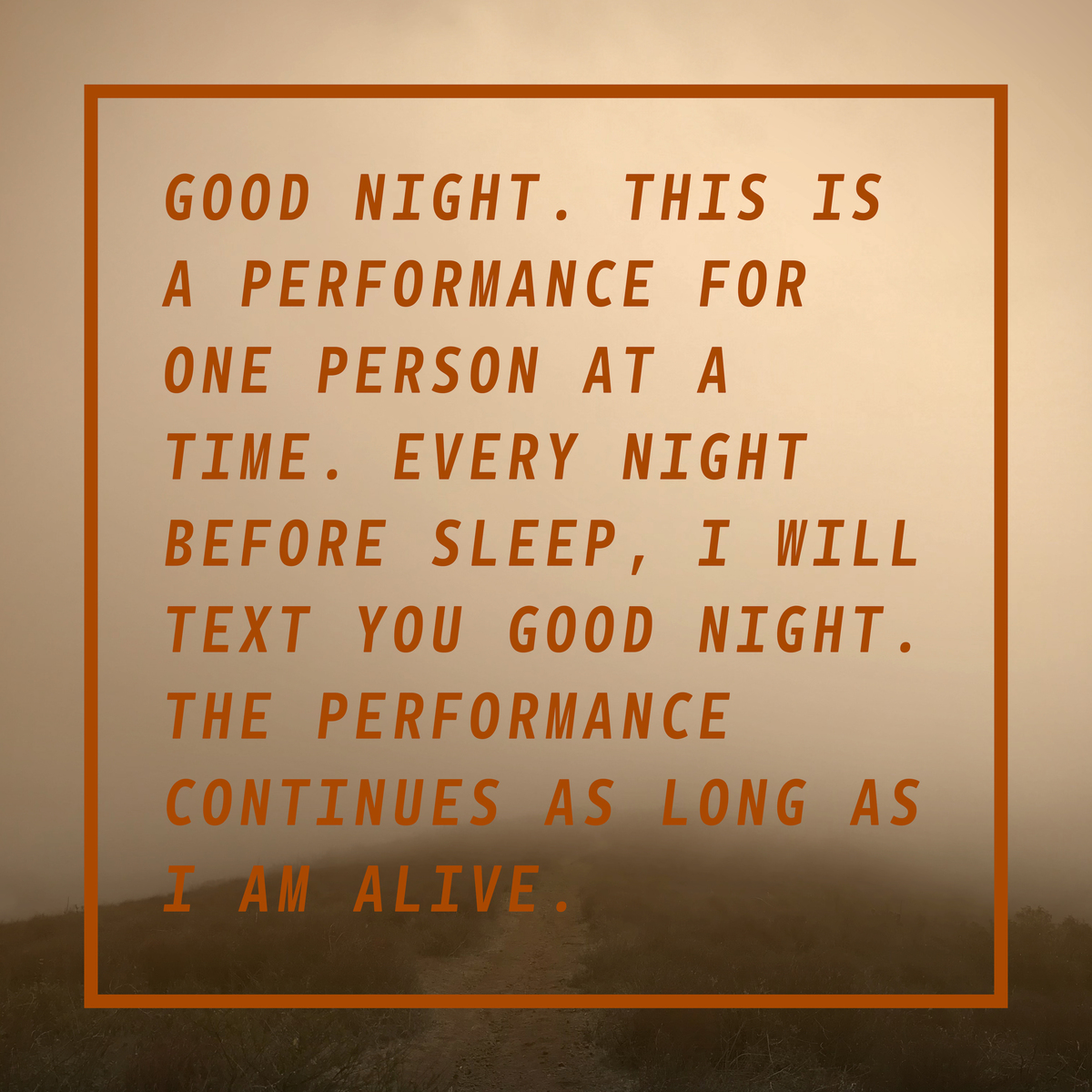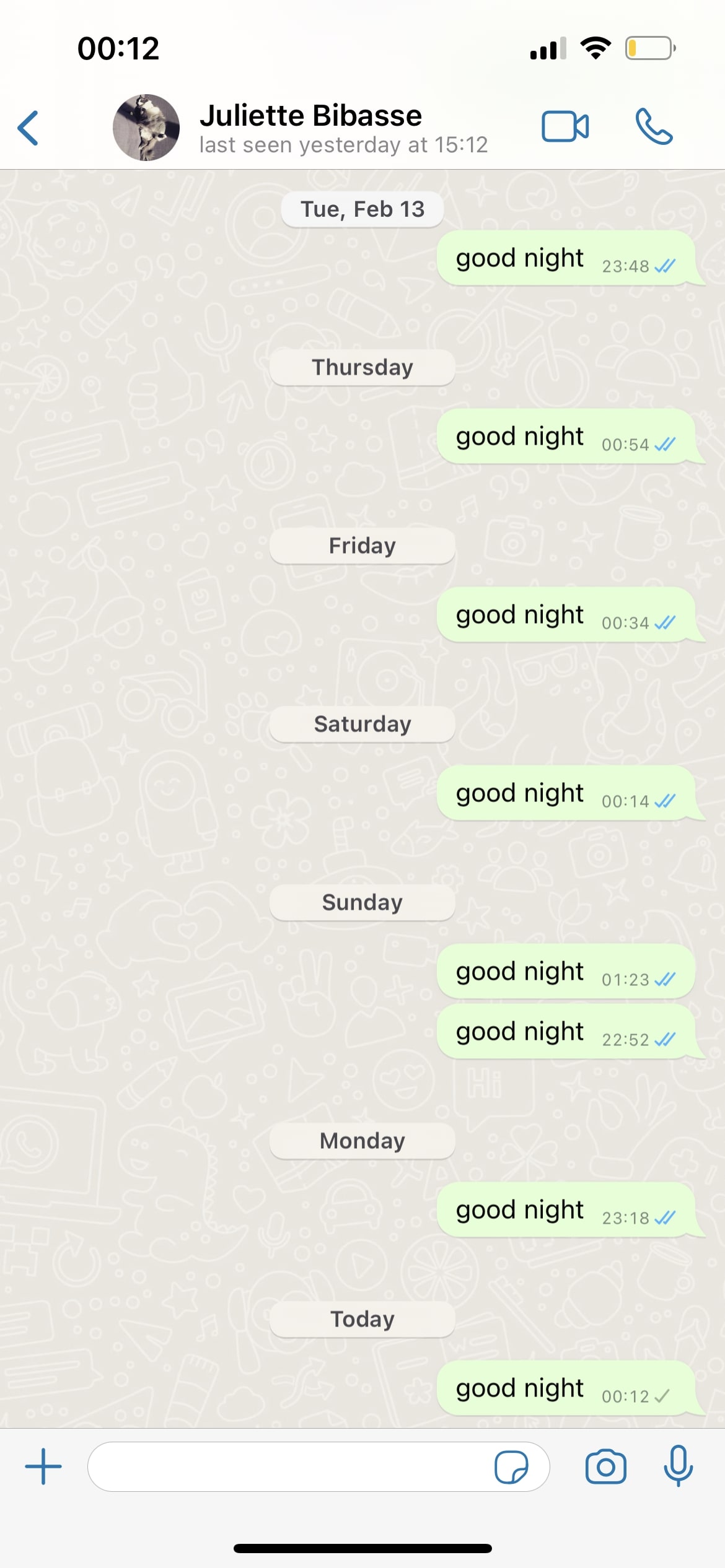1of1
A collectors' club works with institutions to develop exhibition opportunities for dynamic works of digital art.

Juliette Bibasse is a Brussels-based curator specializing in digital art. Since 2009 she has worked closely with artists to develop and realize their multimedia works for exhibitions and festivals, and she is currently co-director of Studio Lemercier. While she does not think of herself as a “proper” art collector, over the years she has acquired several personally significant pieces. These include Lauren Lee McCarthy’s Good Night (2021), which was produced for The Fen, a series of NFT drops initiated by Bibasse and the artist Joanie Lemercier. Every night before she goes to sleep, McCarthy will send a text saying “good night” to the person who has the NFT. So, what is it like to be the owner of this work—to participate in a performance with no pre-decided end date? What has Bibasse learnt about McCarthy’s practice during the period since the token entered into her possession? And does she have any plans to pass it on? In the text below, Bibasse reflects on her experience of Good Night.

In 2019 I was appointed international guest curator for STRP Festival in Eindhoven. It was the first curatorial role I had where I was in the position of commissioning an artist to make new work. Lauren Lee McCarthy was the first artist I reached out to. I had been introduced to her work through another artist I knew, Kyle McDonald, and I found her approach to using technologies to be very unique. She has such a personal approach, she puts a lot of herself into her work. And she always seems to go beyond what everyone else is doing.
For the festival, we commissioned a project called Waking Agents (2019). In the installation the audience was invited to lay down in a cozy space where they could take a nap on an “augmented” pillow. There were voices coming out of the pillows that would speak to you during your nap time. The idea was to make people question whether these pillows were being directed by real human beings or a quirky artificial intelligence. In fact the texts were all scripted by Lauren and read by performers to create this sense of uncertainty—this blurry area where you really start to wonder about the technology.

What I loved about this piece is that, like a lot of Lauren’s pieces, it’s not only about what you experience in the moment but also about the conversations people had afterward. You’d have someone say how funny and clever their pillow was, then someone else would say their pillow made no sense and clearly the machine wasn’t working.
The Fen was an initiative that I developed with my partner, the artist Joanie Lemercier, in 2021. Joanie was already producing NFTs and we wanted to support the artistic scene. We wanted to bring on board talented artists working with digital media who hadn’t yet started doing things with NFTs, and to get them using greener blockchains like Tezos. We made step-by-step manuals, showing artists how to create a wallet and that kind of thing. We did around thirty drops—Lauren’s Good Night was one of them.

With most of the other drops, the artist would give me and Joanie one of the editions, but Good Night was a unique piece and Lauren chose to give it to me. I wouldn’t consider myself a proper art collector. I own a couple of augmented screen-based works and—although I’m not especially interested in works that are purely virtual or online—I do have some NFTs because of The Fen. But I struggle to even think of Good Night as an artwork. I know Lauren thinks of it as a performance but for me it’s really just a “moment” in my everyday life.
The way it works is that every day I get a text message from Lauren that says “good night.” I’m in Brussels and Lauren is in Los Angeles so usually I’m getting up in the morning when she texts me. It doesn’t come from her regular cell phone number—I only realized this recently when I was passing on her contact details to a friend. For a while I also thought the messages were automated. I didn’t think this was a bad thing, I just figured it would be very simple and efficient to have a bot send the messages every day. I can’t remember in what context it was that Lauren explained it was always her, that she had a reminder in her bathroom to message me after brushing her teeth.
It made me feel really stupid to have thought the message would be automated. I’m pretty sure that if someone like Kyle or Joanie had done something similar they would have automated it, but that’s not what Lauren is about. It’s just like in Waking Agents—there is always a human driving it. I think the reason I assumed otherwise is that I often consider technology as a tool for efficiency in achieving some kind of goal. But that’s not how or why Lauren is using technology or what she’s questioning with it at all.
I don’t reply to her very often, but sometimes I will notice that the text comes through at a different time of day, so I will ask Lauren where she is in the world. Or if I’m somewhere special I will reply saying “good night” too. Sometimes I feel guilty because I haven’t messaged back for a while. When I do respond we usually end up having a small conversation.
I think it is important to the work that in this ritual—and despite the apparent coldness of technology—there is this possibility of real human interaction. That’s something which is a common thread in several of Lauren’s installations and performances. She really is there. There is no pretending. In the work there is a human who mimics a machine, but the moment you treat them as a human, they respond accordingly. It makes me think about all the rules that govern social interaction, and how at any point you could change these if you wanted to.
I will keep getting these messages until I transfer the NFT. It’s odd to think that I have control over Lauren’s life in this way. At first, I felt selfish for keeping hold of the work, because I wasn’t sharing the experience. I have wondered whether I would have been more likely to pass it on if I had stayed more active in the art scene on Tezos. But I didn’t want to be part of all the speculation that was happening and I felt like I was protecting the work by keeping it to myself. Maybe one day if I meet someone who I think will really appreciate it, then I will pass it on.
—As told to Gabrielle Schwarz
